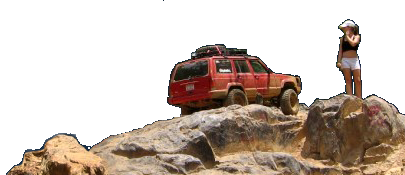Jeffncs
Well-Known Member
- Joined
- Apr 4, 2017
- Location
- Wake Forest
Good evening!
im currently researching the 4.0l EFI going into a CJ7. I have the engine, harness, sensors.... In my reading, I’m not sure what to do about the EFI fuel lines. I know this is a high pressure system and that I can’t reuse my old rubber fuel lines. However, I’m not finding clear answers on a few things. Can anyone help?
Questions...
Using my CJ7 gas tank, there’s a short metal tube (supply) with a standard slip fitting. Can I attach my EFI rated fuel line and EFI fitting onto that tube safely?
what diameter should I run for the supply? 5/16”?
what diameter should I use for the return? 5/16”?
can I safely run EFI rated rubber lines from the front to back? Or should I plumb stainless lines as much as I can? Or are the hardlines nice to have and not required? if the hose is protected?
If i install the hardliners, with the lines hold the pressure rated fuel or do I have to install a special fitting to avoid blowing fuel across my exhaust?
I’m on a budget, it safety is a priority....and will spend money in the right places.
Thanks!
im currently researching the 4.0l EFI going into a CJ7. I have the engine, harness, sensors.... In my reading, I’m not sure what to do about the EFI fuel lines. I know this is a high pressure system and that I can’t reuse my old rubber fuel lines. However, I’m not finding clear answers on a few things. Can anyone help?
Questions...
Using my CJ7 gas tank, there’s a short metal tube (supply) with a standard slip fitting. Can I attach my EFI rated fuel line and EFI fitting onto that tube safely?
what diameter should I run for the supply? 5/16”?
what diameter should I use for the return? 5/16”?
can I safely run EFI rated rubber lines from the front to back? Or should I plumb stainless lines as much as I can? Or are the hardlines nice to have and not required? if the hose is protected?
If i install the hardliners, with the lines hold the pressure rated fuel or do I have to install a special fitting to avoid blowing fuel across my exhaust?
I’m on a budget, it safety is a priority....and will spend money in the right places.
Thanks!

